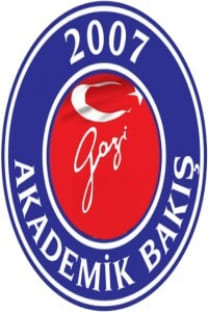Osmanlı Bursa’sında İpek Sektörünün Gelişimi: Dönemsel Bir Analiz
Osmanlı, Bursa, İpek, Dönemsel Analiz, Ticaret
The Development of the Silk Industry in the Ottoman Bursa: An Analysis of Periodization
Ottoman, Bursa, Silk, Periodization, Trade,
___
- AKTAR, Ayhan, Kapitalizm, Az Gelişmişlik ve Türkiye’de Küçük Sanayi, Afa Yayınları, İstanbul 1990.
- ALTUN, Dilek, XIX. Yüzyılda Bursa’da İpek Böcekçiliği, Gazi University Graduate School of Social Sciences, Ankara 2013 (Unpublished Master’s Thesis).
- ARMAĞAN, Mustafa (ed), Osmanlı Tarihini Yeniden Yazmak: Gerileme Paradigmasının Sonu, Timaş Yayınları, İstanbul 2011.
- ASLAN, Demo, “Modern Türkiye Tarihini Dönemlendirme Meselesi”, Turkish History Education Journal, Vol. 3, No. 2, 2014, pp.65-81.
- BLAISDELL, D. C., Düyûn-ı Umûmiyye: Osmanlı İmparatorluğu’nda Avrupa Mali Denetimi (tr. A. İ. Dalgıç), Nesnel Yayınları, İstanbul 2008.
- BOZPİNAR, Cumali, Osmanlı Devleti’nde İktisadi Zihniyet ve Sanayileşme Sorunsalı: Bursa İpek Sektörü Örneği, Hacettepe University Graduate School of Social Sciences, Ankara 2018 (Unpublished Doctoral Thesis).
- ÇİZAKÇA, Murat, “A Short History of the Bursa Silk Industry (1500-1900)”, Journal of the Economic and Social History of the Orient, Vol. 23, No. 1/2, 1980.
- DALSAR, Fahri, Türk Sanayi ve Ticaret Tarihinde Bursa’da İpekçilik, İstanbul Üniversitesi Yayınları, İstanbul 1960.
- ERDER, Leila Thayer, The Making of Industrial Bursa: Economic Activity and Population in a Turkish City: 1835-1975, Princeton University, Princeton 1976 (Unpublished Doctoral Thesis).
- ERGENÇ, Özer, XVI. Yüzyılın Sonlarında Bursa: Yerleşimi, Yönetimi, Ekonomik ve Sosyal Durumu Üzerine Bir Araştırma, Türk Tarih Kurumu Yayınları, Ankara 2014.
- GENÇ, Mehmet, “İltizam”, Türkiye Diyanet Vakfı İslam Ansiklopedisi (Vol. 22), 2000, pp.154-158, https://islamansiklopedisi.org.tr/iltizam--vergi (various dates).
- GENÇ, Mehmet, “Mâlikâne”, Türkiye Diyanet Vakfı İslam Ansiklopedisi (Vol. 27), 2003, pp.516-518, https://islamansiklopedisi.org.tr/malikane (various dates).
- ISSN: 1307-9778
- Yayın Aralığı: 2
- Başlangıç: 2007
- Yayıncı: Hale Şıvgın
Bilge Kağan Hazinesinin Gün Yüzüne Çıkarılması: Bilge Kağan Anıt Alanı Kazı Çalışmaları
L. Gürkan GÖKÇEK, Kürşat KOÇAK
Atatürk Dönemi Dış Politikasında Barış İlkesinin Uygulanmasına Bir Örnek: İspanya İç Savaşı
Neoklasik Realizm ve Küçük Devlet Yaklaşımı Çerçevesinde Kosova Dış Politikası’nın Değerlendirilmesi
Hafız Esad’ın Kararları: Olasılık Teorisi Bağlamında Bir İnceleme
Olgunlaşma Teorisi Bağlamında PKK ile Barış Sürecinin (2013-2015) Başarısızlığının Analizi
Bahar ÖZSOY, Yusuf SAYIN, Esra Banu SİPAHİ
Basmacı İsyanı ve Sovyet-Afgan Sınır Anlaşmazlığı (1925-1926)
